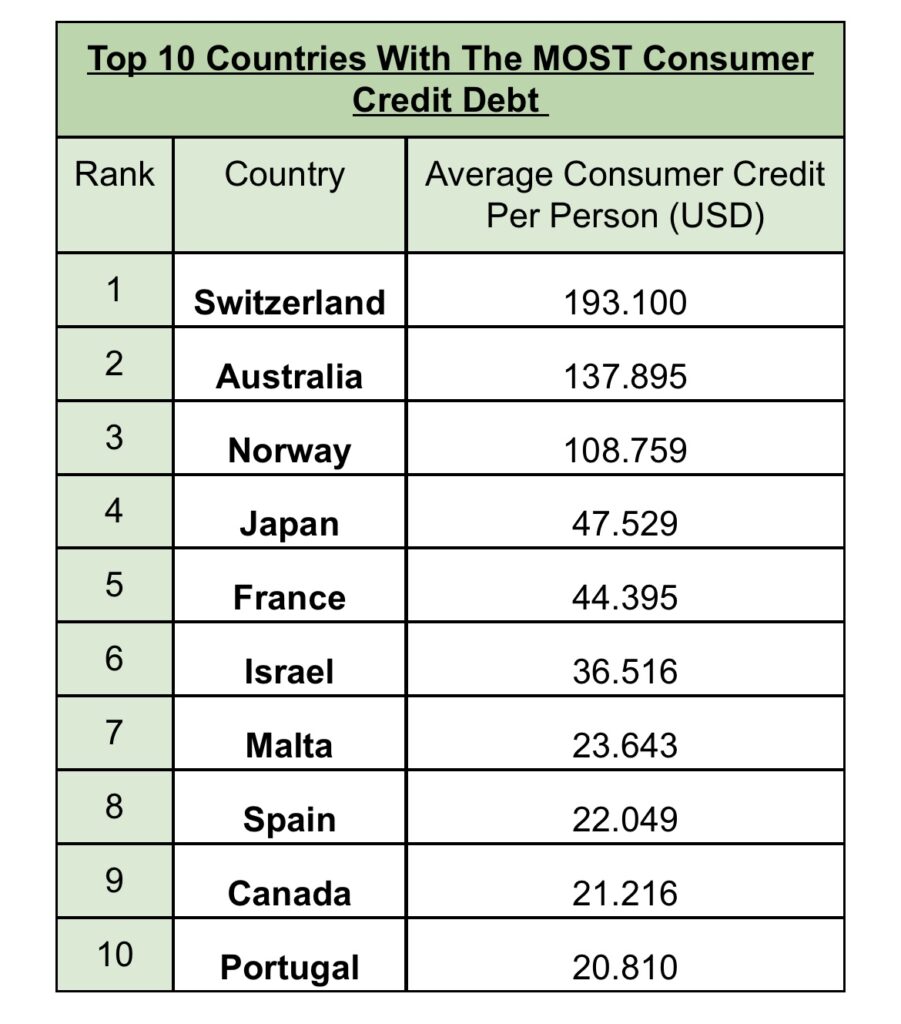The Hidden World of Consumer Credit World Wide

With an estimated global debt of 305 trillion USD, experts have warned of an impending worldwide recession in 2023. But where does each country stand when it comes to personal debt?
By analysing consumer credit debt, Moneyzine have sought to find out the spending habits of each country, and provided their advice on avoiding personal debts
Consumer credit can differ depending on the country, but in general is seen to be a personal debt taken to purchase goods and services. Some of the most common types include credit cards, store cards, buy now pay later schemes or financing a car.
Jonathan Merry, CEO of Moneyzine, says:
“In general, consumer credit isn’t a dangerous thing – there can be many upsides such as improving your credit rating if you pay the debt off in time, and getting items you want before needing to save for them.
“The danger comes when people continue to take out loans or finance options to buy things they can’t afford. When you’re paying $15, $20, $30 for each loan every month – it adds up very quickly and could easily get out of control,which is why debt is one of the highest reported factors relating to low moods in adults.
“One of the best ways to avoid getting into financial situations that you can’t afford is by keeping track of your spendings every month. Some like to do this in a notebook, others in a spreadsheet, however you like to do it; It’s important to keep track of your in and out goings every month.
“By tracking your spending you can better prepare for the future and reduce the need for payday loans with high interest rates.
“Money holds a significant amount of shame in society. Because it isn’t being spoken about, people often hide their financial worries and ignore them until it is too late.
If you need help understanding your finances, or advice surrounding debt please contact https://moneyzine.com/ or your local citizens advice. You are not alone.“
Switzerland is reported to be one of the happiest countries in the world, famous for an exceptional quality of life. A lesser known fact is that it also has the MOST consumer debt per person worldwide, with 193.10 USD of debt per person. This is significantly higher than the world average consumer debt per person, at 12.98 USD per person.
Similarly, Australia (137.90 USD) and Norway (108.76 USD) are both famous for high quality of life, but they both have a high average consumer debt per person of over 100 USD, taking second and third place respectively.
In contrast, Japan takes fourth spot on our list of countries with the most consumer credit debt, with an average consumer debt of 47.59 USD per person, however they are reported to have a significantly lower quality of life.
France follows closely behind with an average consumer debt of 44.39 USD, demonstrating that debt affects all countries and people, no matter the country’s ethos on work and health.





